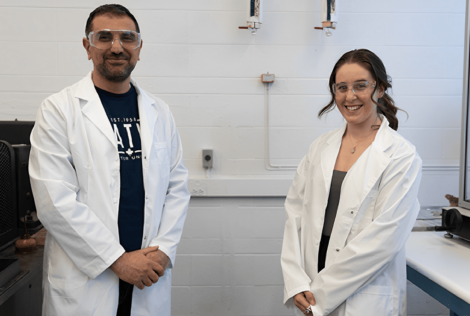
International Women’s Day Mentorship Spotlight: Kendra Hawke and Hatem Zurob
Kendra Hawke is a proud woman in engineering who is inspired to create a more equitable world for women in all industries.
The Centre for Automotive Materials and Corrosion’s (CAMC) research focuses on materials engineering including themes like light-weight material systems, material degradation and protection, and joining issues as they apply to automotive material innovations.
With a wide range of instruments and capabilities, CAMC is also able to tackle challenges facing industries like pipelines, sensors and biomaterials.
Please contact us to discuss how our research facilities can assist you to answer questions arising in your research.
Watch this video to explore CAMC’s research.

Location:
CAMC at MARC
Room 108
200 Longwood Road South
Hamilton, Ontario, Canada
L8P 0A6
Phone:
289-674-0250 ext. 59021